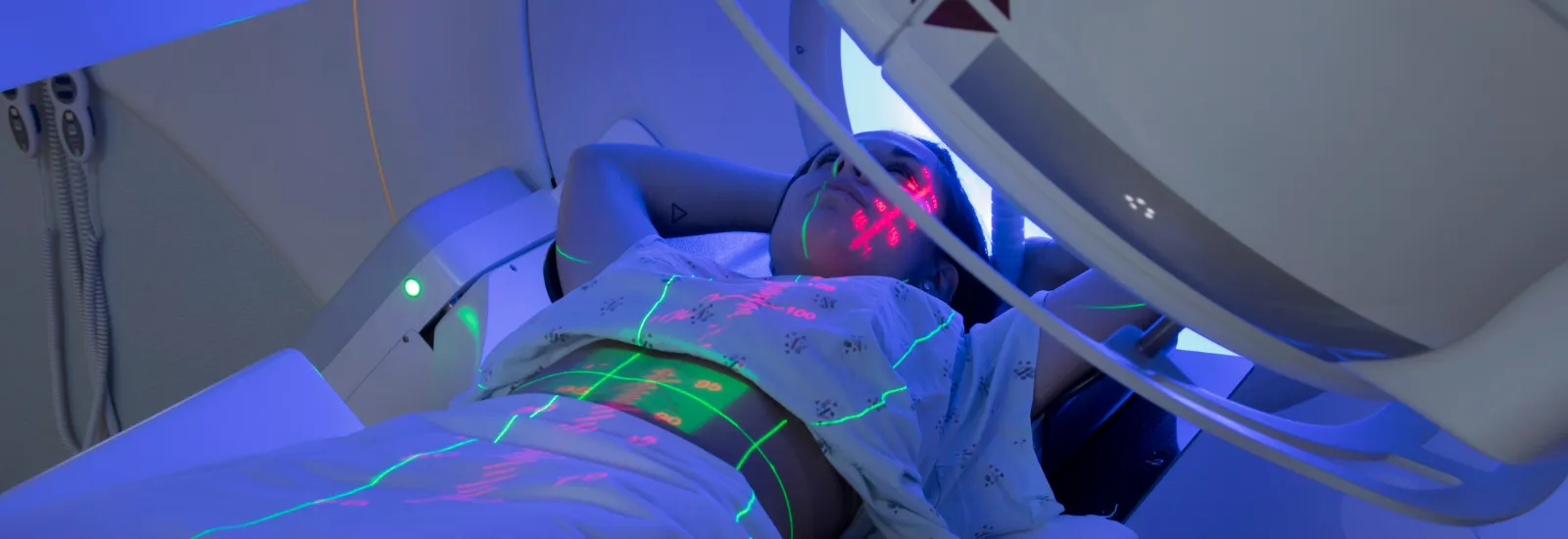
What is radiation therapy for cancer?
There
are a number of medical procedures and drugs used to treat cancer, including
surgery, chemotherapy, hormone therapy, and targeted therapy. Radiation treatment for cancer, also known as radiation
therapy, radiotherapy, or irradiation, is a commonly used treatment. About 50% of people with cancer receive radiation therapy. If your provider suggests radiation therapy as part of
your treatment plan, here are some important facts you should know to help you
prepare.
Radiation treatment basics
Radiation
therapy uses high-energy X-rays or particles to damage or destroy cancer cells.
The radiation damages the DNA inside the cancer cells, which prevents them from
growing and making more cancer cells. With repeated radiation therapy over days
or weeks, the DNA becomes damaged enough that cancer cells die.
Radiation
therapy can be delivered externally, also referred to as external beam, or
internally. The type you receive depends on a range of factors, such as:
- How close the tumor is to healthy normal tissues that may be sensitive to radiation
- Tumor location
- Tumor size
- Type of cancer you have
- Whether you may receive other types of cancer treatment
- Your general health, age, medical history, and other factors
When
external radiation is given, a special machine called a linear accelerator targets radiation at the cancer
from outside the patient's body, sparing healthy tissue. With internal
radiation therapy, it is delivered through a device temporarily inserted into
the body.
Radiation therapy is used to treat many types of
cancer, including prostate, breast, gynecological, head and neck, lung, brain,
and skin cancers. It can also be used to control pain when cancer is in the
bone.
Who gives radiation therapy?
During
radiation therapy, a radiation oncologist oversees your radiation treatment
plan. A team of highly trained healthcare professionals work with the radiation
oncologist, including medical physicists, radiation oncology nurses, radiation
therapists, and dosimetrists. Together, the team ensures the highest quality of
cancer care for their patients.
Is radiation used alone or with other cancer treatments?
For
some types of cancers, radiation therapy on its own is effective. In most
cases, patients will receive radiation therapy with other cancer treatments,
such as chemotherapy or surgery. If radiation is used along with surgery,
radiation can be given:
- After surgery to destroy any remaining cancer cells
- Before surgery to shrink the size of the tumor so it can be removed surgically
- During surgery, once surgeons have a chance to move healthy tissue out of the way, then, radiation is targeted right at the tumor. This type of treatment is beneficial when a tumor is close to vital organs.
The timing when radiation therapy is given depends on
the type of cancer the patient has and if radiation is being used to treat the
cancer or ease the symptoms, according to the National Cancer Institute.
What are the side effects of radiation therapy?
Although radiation treatment kills or slows the growth
of cancer cells, it can affect healthy cells, too. When healthy cells become
damaged, side effects may occur.
One of the most common side effects of radiation
therapy is fatigue or tiredness, which can happen immediately after treatment
or arise slowly over days and weeks. The types of side effects also depend on
what part of the body is being treated. It is important to discuss with your
provider the side effects you may experience, and your chances of having these
side effects.
While side effects are a common concern of people undergoing treatment for cancer, another concern is whether it is safe to be around someone getting radiation treatment. Patients receiving external radiation do not have radiation in their bodies and are safe to be around others.
For more
information about radiation treatment for cancer, contact the Reid Health Cancer Center.

